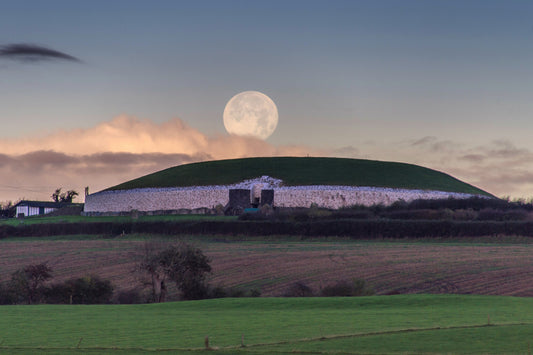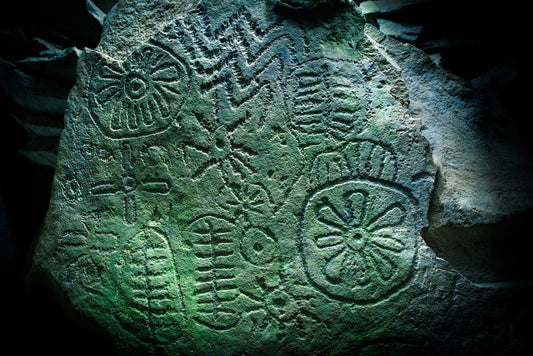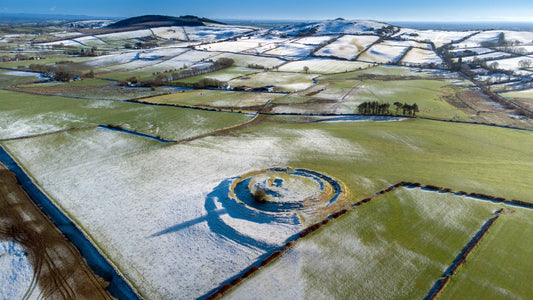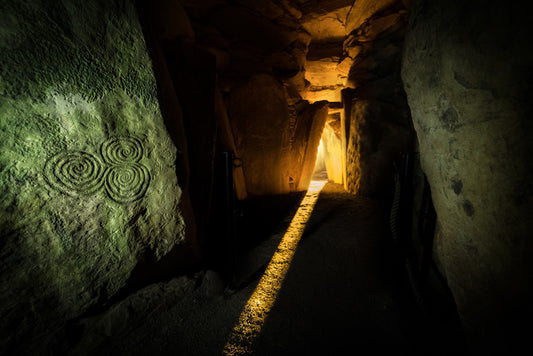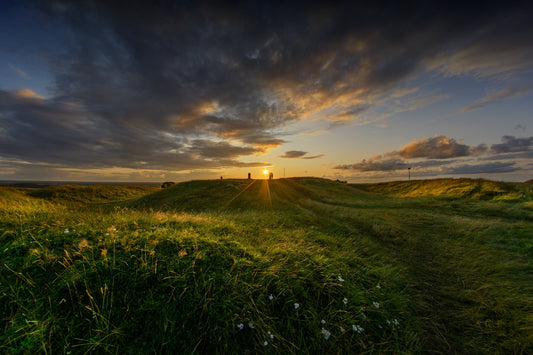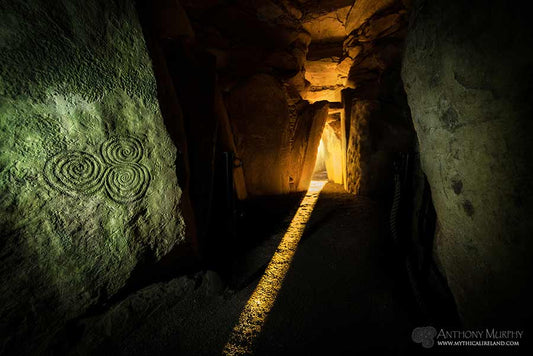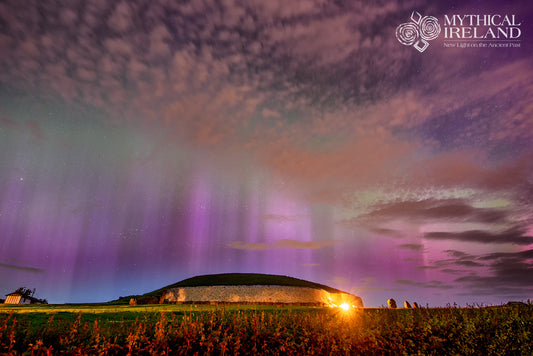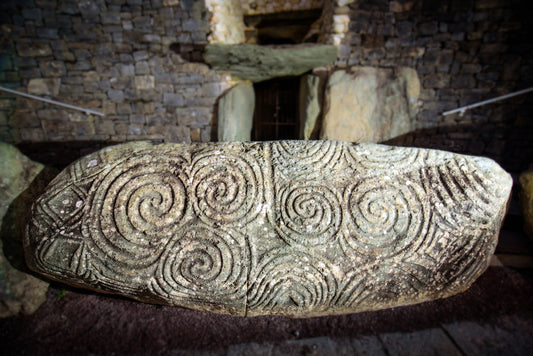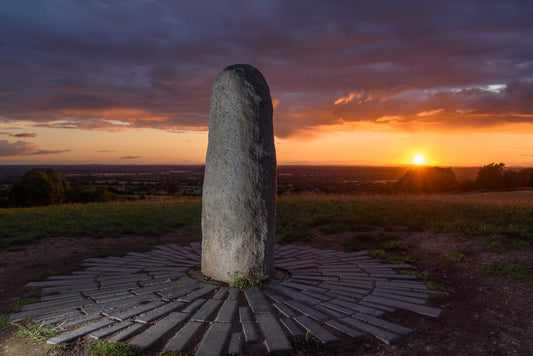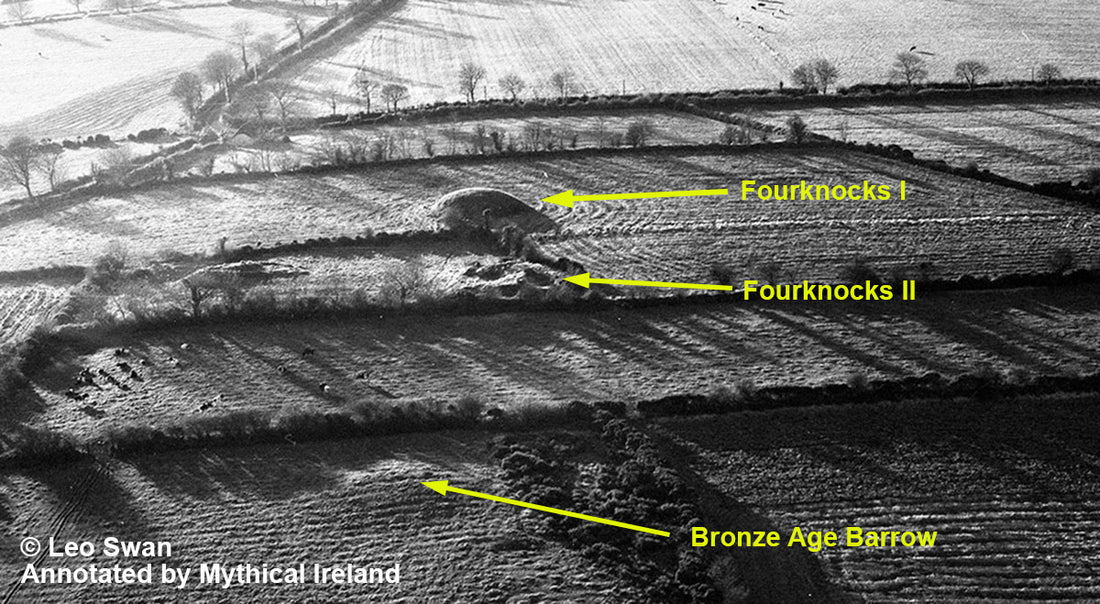
Old aerial photographs of the Fourknocks monument complex
Leo Swan was a very well-known Irish archaeologist who was one of the pioneers of aerial remote sensing. Long before the era of drones, Leo made many flights as a passenger in a small plane, leaning out the window with his camera to capture views of Irish monuments and archaeological sites. He also discovered many previously unknown monuments.

The Fourknocks mounds photographed by the late Leo Swan.
I browsed the Leo Swan Collection and found several fascinating aerial photographs of the Fourknocks prehistoric monument complex in southeastern County Meath.
The above photograph in black and white shows the Fourknocks mounds. The well-known passage-tomb Fourknocks I was excavated by P.J. Hartnett and his team in September of 1950, and this is clearly a post-excavation photo as Fourknocks has its rounded concrete doomed roof - which was installed by the Office of Public Works some time around 1957. Fourknocks II was excavated in the early 1950s also. In the foreground is a denuded Bronze Age barrow.

A wonderful photo of the remnants of the Heathtown Henge near Fourknocks.
Above is a wonderful photo by Leo Swan of the remains of the Heathtown Henge, which is located a kilometre and a half northwest of Fourknocks I passage-tomb. The discovery of this monument is attributed to Leo Swan. It seems to be the remains of an embanked henge which was quite enormous at over 200m in diameter, making it larger than any of the Brú na Bóinne henges and more like the size of Rath Medb at Tara.
Although Geraldine Stout (1991) described Heathtown as an embanked enclosure (which is really an embanked henge), this monument is curiously listed in the Historic Environment Viewer as a "Hillfort".

Fourknocks-Micknanstown Henge photographed by Leo Swan.
Another of the monuments whose discovery is attributed to Leo Swan is the henge that overlaps the townlands of Fourknocks and Micknanstown, just 450m north of the Fourknocks I passage-tomb. This wonderful black and white photograph taken in oblique sunlight highlights the quite denuded banks of this probable Late Neolithic embanked henge.

Micknanstown Henge photographed by Leo Swan.
Another henge in the Fourknocks prehistoric complex of monuments is the one at Micknanstown, located some 1,200m north of Fourknocks I. It is marked by an arc of trees but the previously ploughed banks of the rest of the monument can still be clearly seen in this colour photograph taken by the late Leo Swan. Micknanstown Henge has the distinction of being the only Late Neolithic henge in Ireland (as far as I am aware) that you can drive your car across. As you can see in the above image, there is a modern road that crosses the henge. You can feel the bumps of the henge banks as you drive along the road. This is featured in a video I made which is embedded at the bottom of the page.

Fourknocks mounds photographed from the west by Leo Swan.
This last image shows the Fourknocks I and II mounds from the west. It is an interesting fact that the builders of the Neolithic monuments of the Fourknocks area were part of a community of farmers who had introduced agriculture into Ireland, and the very landscape in which they built their monuments is still being farmed today.

